Although I have only seen pictures of the recently closed exhibition of artist Simion Cernica, which took place in a Los Angeles that has already assimilated him, following the activity and practice specific to recent years, I decided to take advantage of the private discussions I had with him in order to try and detail the premises of this recent production. To me, it seems relevant for questioning the role of the artist in today’s consumer society, with its multitude of carefully engraved references in the artifacts, as well as in the production model or implementation of the exhibition concept.
In an interview, the late Ilya Kabakov proposed a simple recipe for being a successful artist in the West. Pointing to a new kind of disguised cultural colonialism that takes place within current cultural policies, that promotes decolonization, he said that to be an artist today it is enough “1. to come frome developing world or simply far away country; 2. learn English language US developed ”artspeak”; make work about your country.”
Simion Cernica, who has reached that fortuitous but defining mid-career moment that settles or forgets an artist in the collective mind, is an author with a well-coagulated activity in a public or private institutional context, who, fitting the typology of the current artist, consumes his discourse with strong political or social tropes, in a transmedial practice. During his formative period, he took up painting without having followed simple fine arts studies but with an academic background based on the positivist sciences – mathematics and physics, more relevant to today’s social realities. Then, his discourse, which also established himself in the art scene, was followed by actions, performances, or concepts whose final artifact was mainly photography. In the specificity of this career moment, he returns in recent years to question the traditional means of expression, with a much more politically abstruse discourse, strongly aestheticized in contrast to the one that established him, but which, as we shall see, is authentic both to his local LA, transposed abstractly through its soulless commercial wasteland, lined with billboards, fast-food stands or ad hoc personal development, and to the structural context of Eastern Europe, a context that basically imposes abstractionism as a method.
These new works look like the smears of pollution traces, be it social or industrial, of chemical substances and materials left as streaks in the atmosphere, of increasingly efficient machines. They have shell-like materiality, stylistically so typical to the American painting, but they also mimic the sepulchral beauty of the wind-hardened canyons in golden or pinkish sand which so well define that “free spirit” of the American West, which only could have coagulated as identity in such empty landscapes. Thomas Lawson suggests in his influential Artforum article, Last Exit: Painting (1981), that an ambiguous political formalism may be the only resort left to subversive art.
Initially, he accepts Kabakov’s “offer” and creates actions or photographic series that deal with irony – as one of Simion Cernica’s fundamental trademarks – the liminal condition transposed tragi-comically, of the departure to the West, as it is understood at home and not according to the realities there. With the new series of works created in recent years, exhaustively in painting on canvas and ready-made installations, presented in private galleries, as opposed to the institutional one that was the main platform in his previous period, one can perceive a strong authentic vein given by a strong presence and materiality; this messily unveils the same strategies of positioning the individual – politics as everything related to identity – but where irony is less and less flickering, giving way to standardized symbolic suggestions and an analytical technique of compositional construction. Note that all this takes place in a context of cultural politics in which the institutional West has shown a particular interest in the space of the former Iron Curtain, in both its varied and untranslatable neo-avant-garde pre-1990’s manifestations, rigidly superimposed on the perceptions of American conceptualism. At the opposite pole, the West of the art market has subtracted and then even boosted the creation of a whole area of artifacts belonging more often than not to traditional media, with historicized subjects – Hitler, Stalin, della Francesca & co., to which we were about as far away as they were.
What does a protest artist do for the condition of center vs. periphery in the new realities that continue to remain a defining biographical factor in the negotiation of his artistic space? He takes protest from its public-institutional platform, beautifully packaged and abstracted, to be sold to elites into the gallery. Subtly unveiled in Simion Cernica’s paintings are subjects and motifs that have guided his trajectory since his practice was enabled in mediums such as performance, photography, commissioned collaborative projects or protest actions, defined by processes and substances such as: recyclable or waste materials, transformed protest signs or the primary colors seen as avatars of identity, often presented oversaturated or plasticized and thus artificialized.
The authenticity that shines through, in contrast to the practice of conceptualism often seen as discursively cold, is also related to a recent moment we have all experienced and which has often been transposed into the discourse of a new intimacy or authenticity, the recent global health crisis. In reference to the recontextualization of his practice towards painting, the artist says: “Coming back to the present, in the pandemic, I got new chemicals, transfer paper, so I could experiment with different techniques on canvas, but I kept putting it off. I felt I had something to finish with the vandalism and multiple layering of acrylics and oils.” And, raising the aesthetic issue: “So there’s some new stuff in the lab and also ideas that have accumulated over the years; a more intense but also more refined punk-poetic visual… painfully necessary to start as soon as possible though for me, where I need to revisit Caravaggio, Vermeer, Pasolini & other dear artist friends.”
In the dreams of the collective mind, which Simion Cernica so often stirs and instigates, Los Angeles is a providential space of the golden hour that never wakes up. A flat expanse of human settlements as layered as possible, located between the geographical borders of that so physical “California Sunshine” – even a drug bears its name and the illusory but material destinies that occur on its hills, with its eclectic parties where artistic careers can be established, with its Tabor-like Hollywood at the edge of the “society of spectacle” – another important reference in the artist’s practice.
The conditions and characteristics of specific production in the consumer society are suggested by the use of poor materials, or of production line-like techniques, such as repetitive stencils linking several works, and by the serial technique involved, where the paintings each seem to have an extra digression, from a cognitively conceptualized standard pattern, never fully shown. Regarding this context, the artist mentions, “related to how I work with sculpture (still Arte Povera), where I end up producing/finishing, as you know, mainly when I’m about to have an exhibition, otherwise I don’t constantly produce object/sculpture/installation since I have nowhere to store them. Take for example the sculptures in the Iomo and The H Gallery solo shows, in Bucharest.”
As I mentioned in the text that accompanied the exhibition, in 2021, organized with Simion Cernica at the IOMO gallery, he creates this model of compositional construction, but also of institutional practice, which betrays an algorithmic type of thinking that without a doubt comes from his academic training. Within the context of his previous work, it is interesting to see the ease with which certain artists, swap left-wing issues with those of free market and product circulation.
On closer inspection, subtle references to the Eastern past and its academic background often occur in the pictorial series. First of all, the cross, which is sometimes formed between compositional elements, sometimes explicitly present, or the entropic circles that refer to the idealized static-geometric perfection of physics and mathematics, in opposition to the incomplete and entropically elevated everyday. Also, the preference for the color scheme, either from the industrial color spectrum, which has appeared since the first recent series in painting on canvas (Chemical Sunset), or the omnipresent triad of primary colors, which also represents the formal symbolism of national identity, his trademark in the commercial sense. In a recent interview in the pages of Revista ARTA, he stated that “in the medium and large paintings in the exhibition (n.a. Unplugged Cave), the circle appears repeatedly, mainly because they are drawn from an extended series called Chemical Sunset, but not exclusively. The circle is an essential, primordial, organic geometric form with particular aesthetic power, which I am interested in putting to work, always careful to integrate it into the compositional and conceptual fabric of the work, naturally.” By enhancing and differently interposing the three colors, they acquire a commercial product-like artificiality, which can be seen in works such as Untitled (Self-portrait w/ pioneer decorations), from 1998-2008, or in the photograph roșu, galben și albastru / red, yellow and blue (2008), reinforcing that moment of revisiting, as I’ve mentioned, of the artist in his position. We can, of course, also recall that moment of his establishment in LA, where like Martin Kippenberger, the artist uses a message of self-welcome, a ready-made, on a volumetric commercial advertisement, drawn in the same national-identity chromatic.
Often working in his video or photographic practice with archive material of national-communist propaganda or with images of the transition period, directed or spontaneously captured, which refer to the same retrograde nationalism of packaging and advertising, ready to signal rapid consumption, it is not surprising that the palette of primary colors acquires a solidity that goes beyond the formal framework, loaded proprioceptively with provoked stimuli.
I believe that this aspect that deals with a practice, which even if formally is in constant change – liquid as the concept of liquid economy – keeps basic, stegano – and not cryptographically – encrypted the same identity imprint given through individuation by the artist to the physical world, in the extended durational biographical context, is precisely what gives the mark/brand of an author, who can now remain sedimented in the collective mind, as well as critically. This can be seen in the painting Untitled (BUC Matrix Chemical Sunset #1), from 2023, presented in the exhibition “Unplugged Cave”, curated by Tea Vindt at H Gallery in Bucharest, which can be easily be recognized as connected to the ready-made installation Untitled (small debt) from the show “Infinite Debt”, exhibited in 2016 at the @ODD workspace.
In object or installation works, now as then, the practice of combining precious materials, traditionally associated with “heavy” sculpture (such as marble or bronze), symbiotically with the ready-made artifact, can be a critique of current culture, of consumption and consumerist culture, also found in the practice of treating symbolic objects as mock-ups or true artifacts, thus becoming themselves disposable and obsolete products. They are, as Simion Cernica calls them, “small monuments of capitalism”, commenting on the work Unplugged – “I kept the battery processed and perfectly unusable. I declare the original battery to be another small monument automatically dedicated to the new times.”
It is worth mentioning since we have referred in several places to the previous exhibition within the H Gallery space, that the self-organized exhibition in the LA space seemed to continue the “cave” concept; it is obvious by its positioning in the first garage-studio where the artist worked in 2012 (next to which he owns the current garage-studio), authentically carpeted with wooden panels, not mausoleum-like as the paneling of the Brauner exhibition in TM, well-captured in the cultural press. About this concept, SC says: “the cave concept, as an artist’s (creative) refuge, of resistance, of the philosopher’s isolated hut, of mental construction, of a cultural journey (into the past) but with the possibilities of the present, etc., has long haunted me.” In addition to its platonic stance of manipulating objective reality, the cave is the hermit’s topographical site of existence, implicitly sending us back to the condition of the outsider, the emigrant. “Now, in the US, I am, again, an Eastern European artist, coming from a space that is no longer of cultural or commercial interest there, and in Romania, it seems that I am an artist who is no longer local, who belongs no longer, who is considered more exotic”, as he reflects on his artistic status in another interview with Propagarta magazine this year.
In the exhibition “Tunnel in C(ontext) Major”, this condition is reflected even in the titles given to the works: Two Way Exit Tunnel #3; Extra Exits; smile from blockchain of bad jokes 2 or Anthropocene Deposits.
In conclusion, I believe, as I’ve said in the beginning, that this turn of artistic practice is also linked to the commercial realities of LA, where the medium of painting is dominant today, as we can see in the program of the Nicodim Gallery for example, representative of the space there. Or, as another artist well acquainted with the vast space and the palpable spectral light typical of the American West, Marius Bercea recently returned from California put it in context “there was almost only painting exhibited there.” Similarly, earlier, in a completely different social and political context, Horia Bernea gives a response to his critics about the apparently traditional neo-expressionist painting he practiced in the 1980s; he said that since everyone now works in the style and techniques of the neo-avant-garde typical of the 1960s, which he initiated along with others, he still considers himself in the avant-garde.
The exhibition Tunnel in C(ontext) Major by artist Simion Cernica was organized by Strategic Pavilion** at Hauser Crossing, Los Angeles and opened on June 4, 2023.
* The title of this article is taken from a conversation I had with Simion Cernica, as an appeal for a prolonged delay of this article, which the artist is saving for a future project;
** Strategic Pavilion is a nomadic artist-run space that emerged in Los Angeles in 2020. It was born out of a need to add extra experimental energy as well as social interaction to the current LA art scene, but also to test the limits and limitations of an alternative art space.
Translated by Liliana Popescu
POSTED BY
Horațiu Lipot
Horațiu Lipot (b. 1989, Alba Iulia) is a curator and cultural journalist. As of 2021, he works as an independent curator, collaborating with venues either from the ON or OFF art- scene in Bucharest, ...
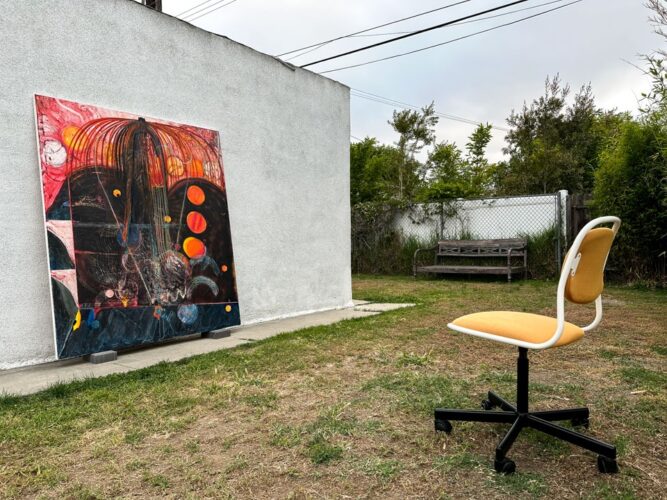
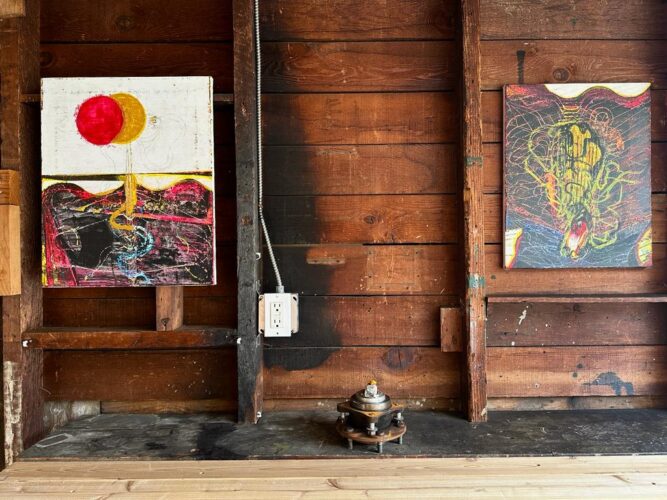
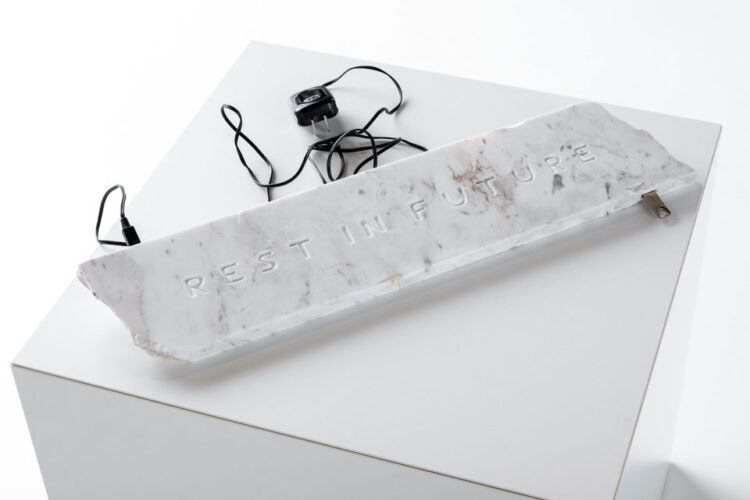
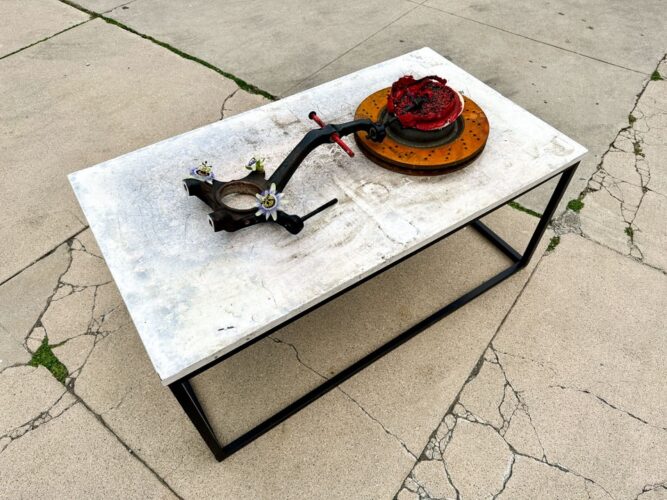
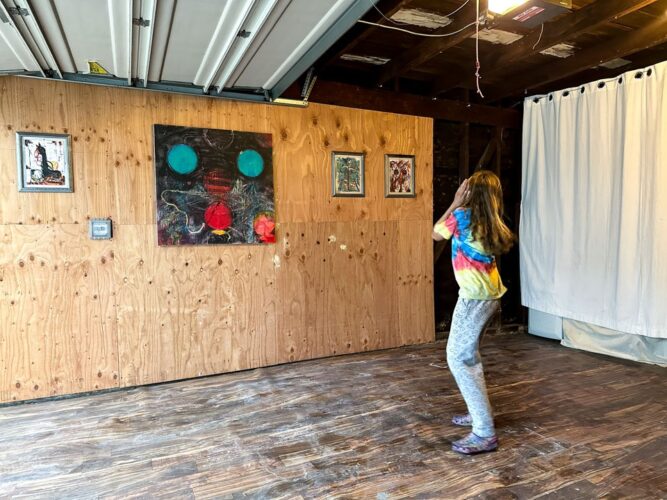
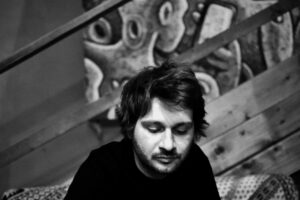
Comments are closed here.